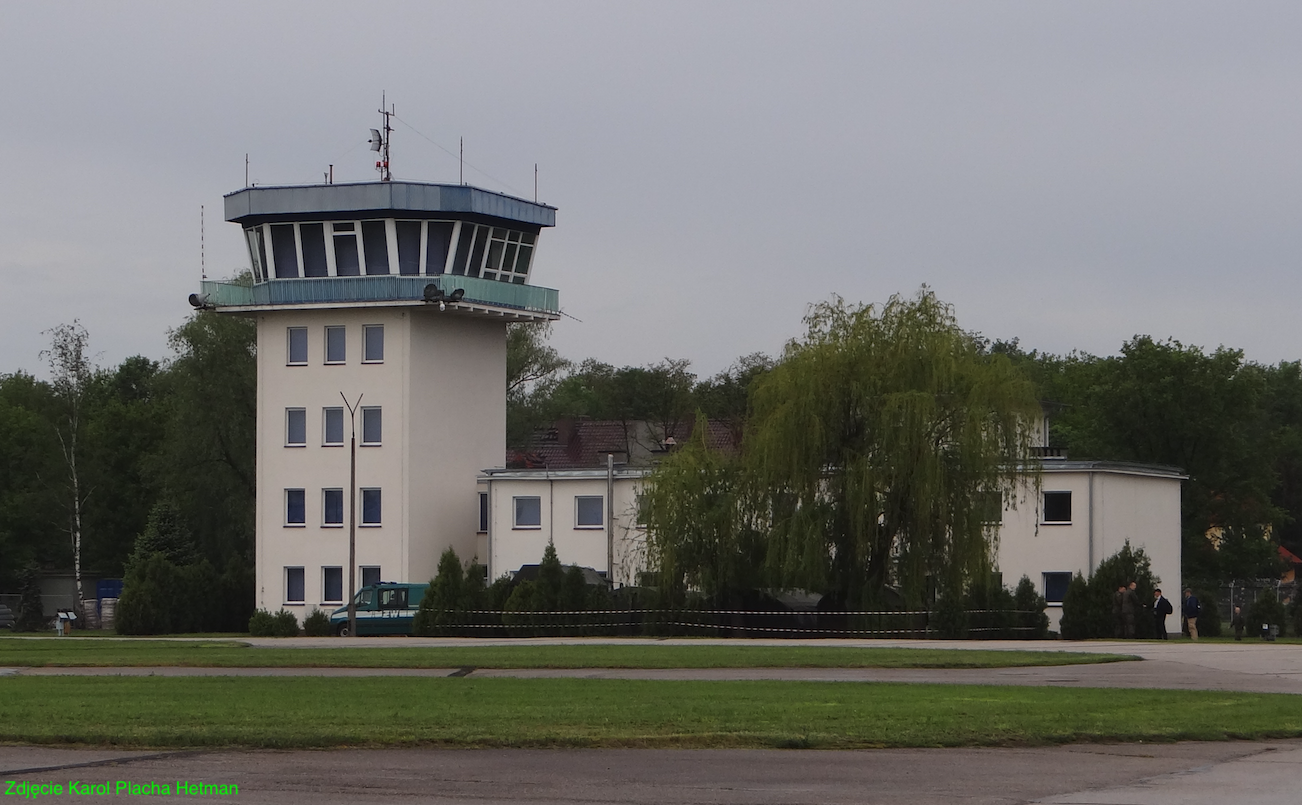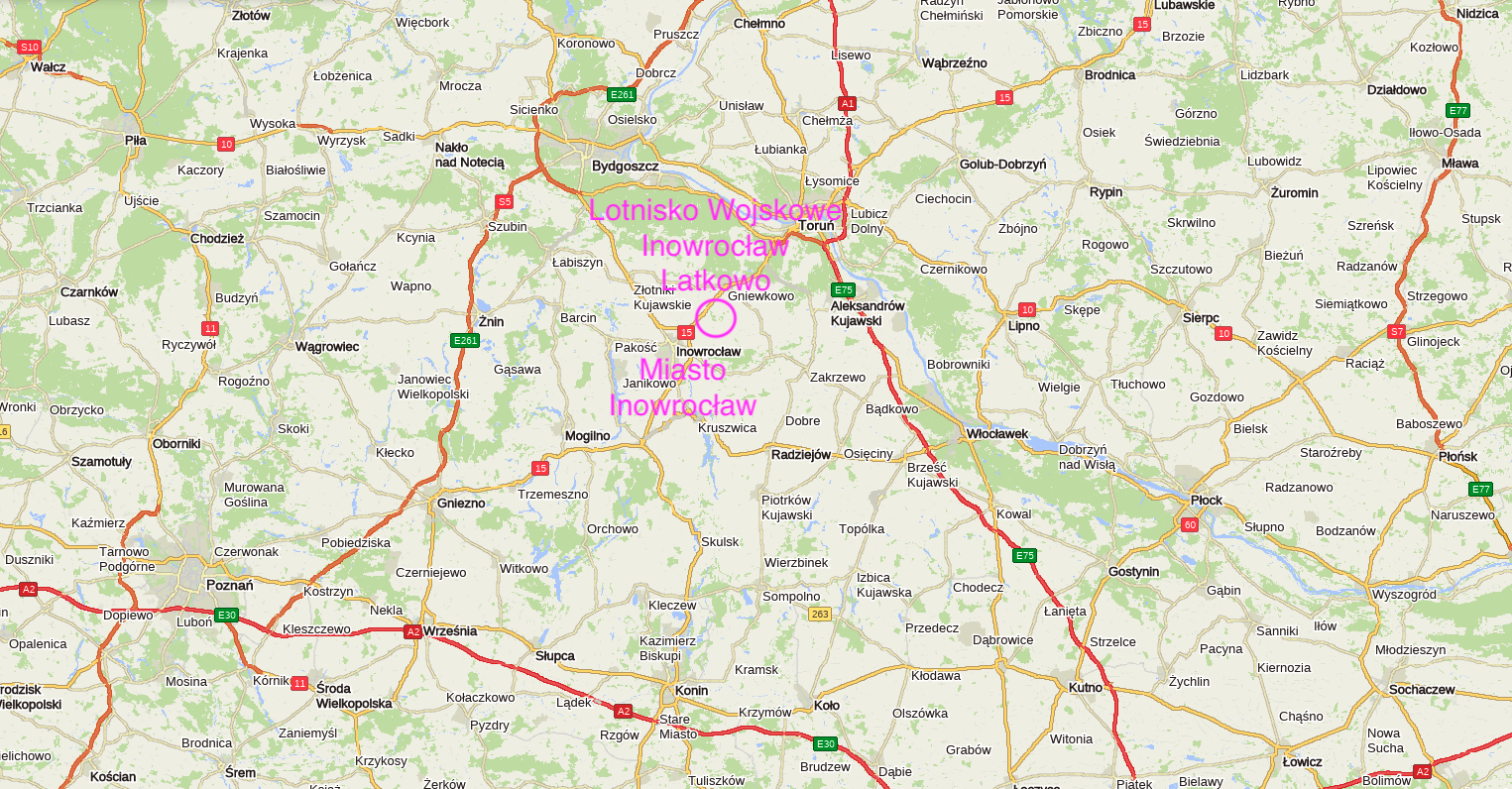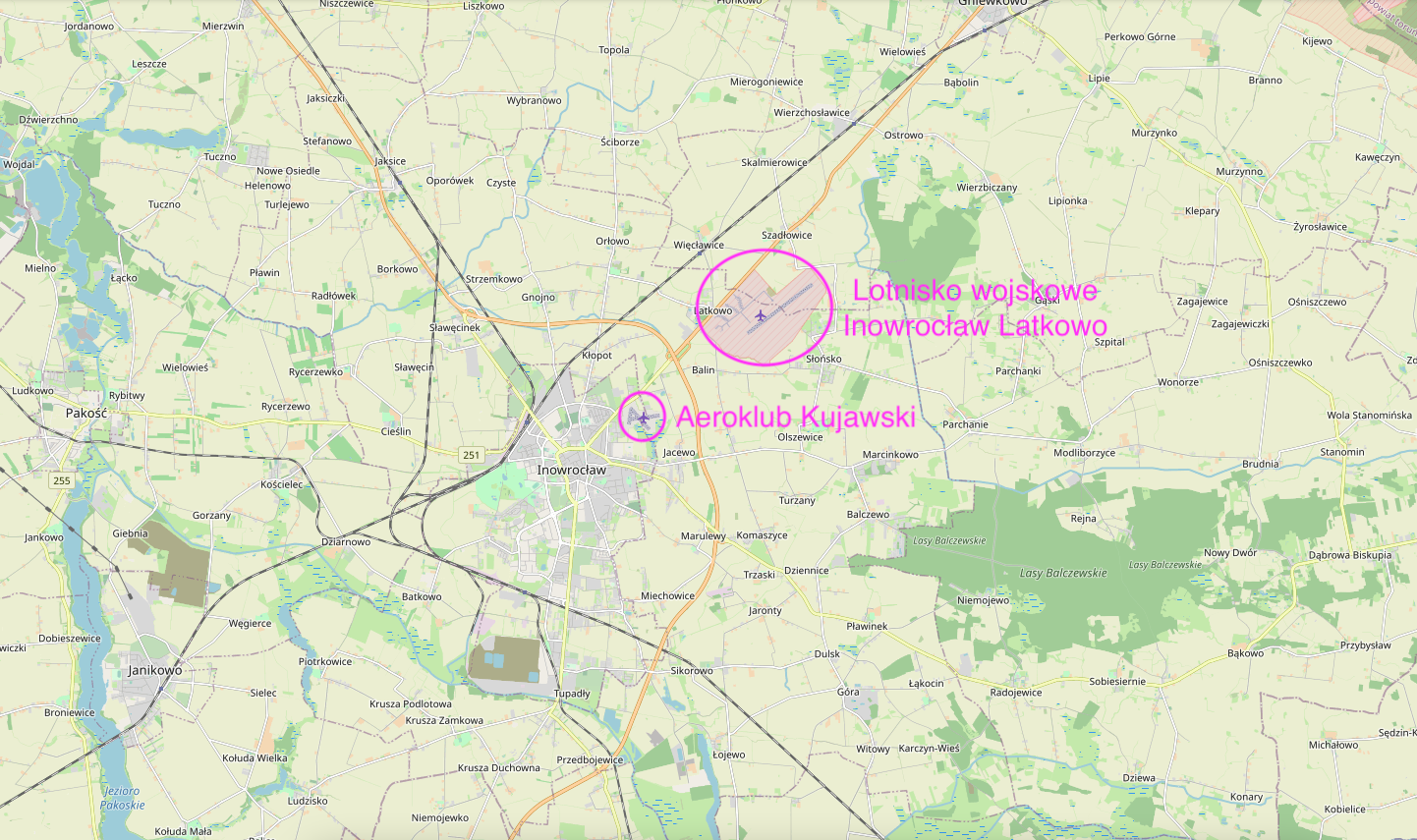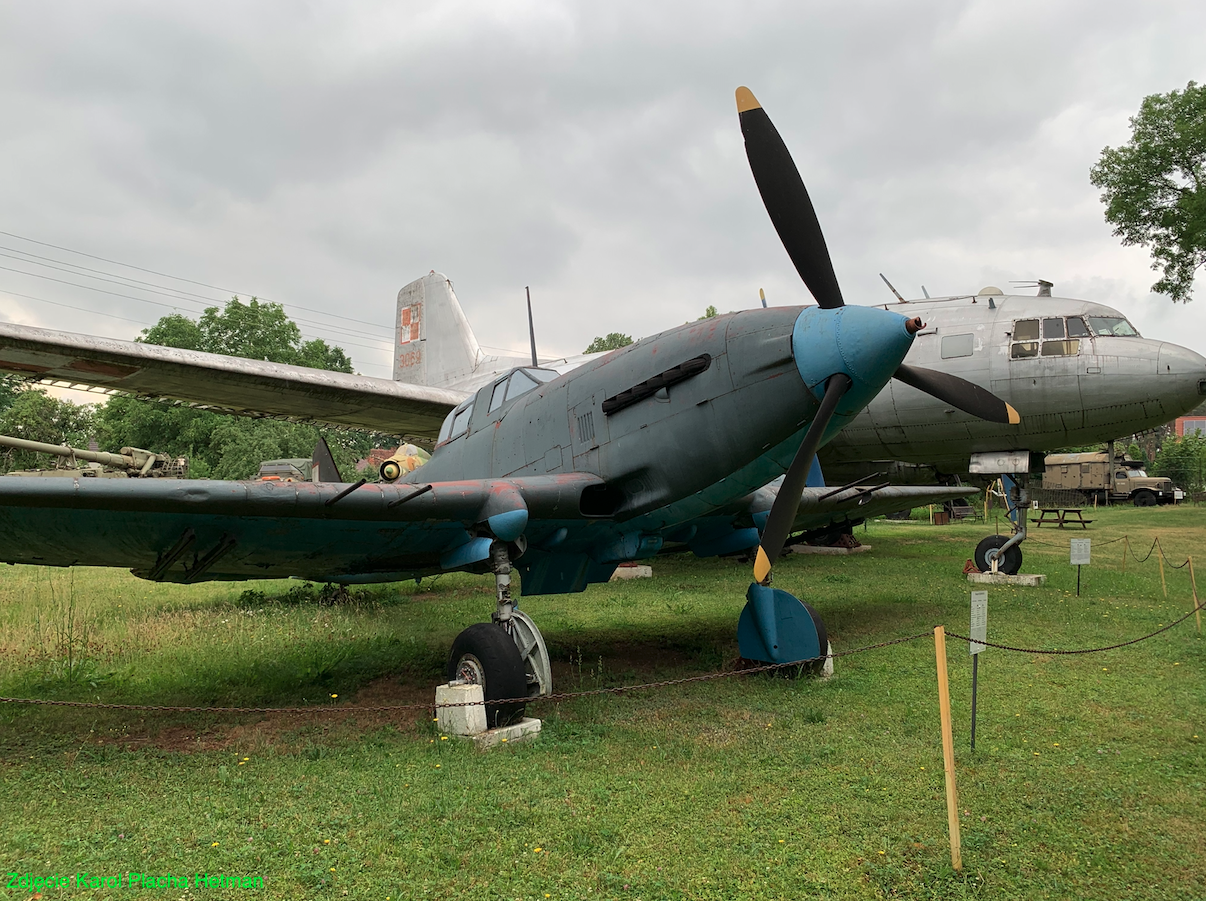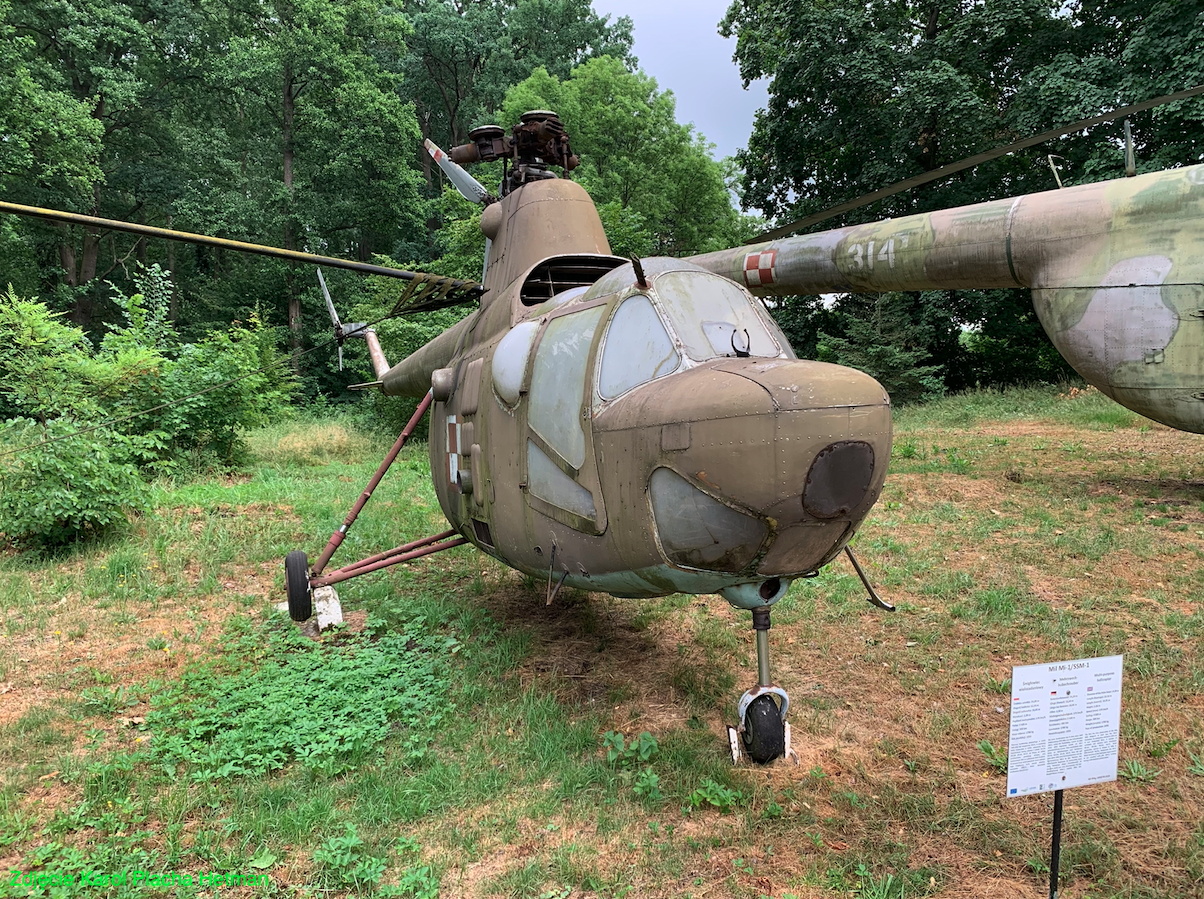Inowrocław 2012-06-23
Inowrocław airport. Latkowo.
Geographic coordinates: 52.827N 18.325E. Elevation 77 m.
History of Inowrocław.
Inowrocław is one of the centers of Staropolskie Kujawy. Sometimes called the City on Salt. Fertile lands were conducive to the development of settlements, mentioned as early as 3,000 BC. In addition, the settlement was located on the Amber Road. On January 20, 1185, the first reference to the princely market "in Novo Wladislaw" comes from the source. The market was located near the Church of the Blessed Virgin Mary. The settlement must have developed dynamically, because already in the 12th century, a brick church was erected here. From 1230, the city became the seat of Casimir I, Duke of Kujawy. The city was surrounded by walls that protected the prince’s castle, Franciscan monastery and church, town hall, saltworks and the old part of the settlement. Inowrocław obtained city rights around 1238. In the period 1466 – 1772, Inowrocław was the capital of the Inowrocław Voivodship. The city developed systematically for five centuries. It was in Inowrocław where the talks with the Teutonic Knights took place. Kings of Poland came from Inowrocław; Władysław I Łokietek and Casimir the Great. The decline of the city began with the Swedish Deluge in the 17th century. The Swedes contributed to the outbreak of the plague in the City several times. The long-lasting Northern War (1700 – 1721) brought the greatest devastation. The city, already poor at that time, was ruined by the Swedish army and Muscovites. All attempts to revive the city ended in failure. The city was gradually taken over by the Germanic minority. In 1772, the city found itself under the Prussian plague. From 1836, only Germans could become mayors of the city. Movable goods of Polish culture began to be exported to the west. The duke’s castle was demolished, and barracks for the Germanic plague were built in its place. The monks were expelled from the monastery. In such conditions, the patriotism of the humiliated Polish population was born. Secret self-education organizations were established. During the November and January Uprisings, many residents took an active part in them. The relative development of the city took place in the second half of the 19th century. Several new facilities were built: a printing house (1840), the first high school (1848), a new hospital (1870), and in 1873, the construction of a railway line began. At the end of the 19th century, the population increased and reached over 26,000 inhabitants. This was not due to the flourishing of the City, but to an even worse situation in the countryside. In 1875, the first sanatorium was opened. A gasworks, a power plant were built and the first sewage collector was laid. In 1912, the first tram line was launched. The defeat of the Germans in 1918 and the outbreak of the Greater Poland Uprising brought independence to the city on January 6, 1919. In 1922, the city received the official name of Zdrojowisko Inowrocław and became a resort. During the twenty years the city developed systematically. In 1923, the Irena Glassworks was launched. In 1924, another mining shaft of the salt mine was opened. In 1930, the construction of the airport began, which was put into use in 1933. Despite this, many residents remained unemployed. There were riots and protests, which were suppressed by the police.
The city of Inowrocław was developing until the next German war adventure, started together with Muscovites. The German plague organized one of the seats of the so-called Wartheland in Inowrocław. The local Polish population was subjected to unprecedented repressions in the history of the city. Hundreds of inhabitants died in the local prison, in an extremely hard camp in Błonia and in the surrounding forests. Several thousand children were transported deep into Germany and Germanized. The first days of the occupation of the Germanic plague were mass arrests and executions of inhabitants, among which the most famous was the so-called "Bloody Sunday" (night of October 22/23, 1939), carried out as part of barbaric German plans. On the night of November 30, 1939, the German plague drove over 1,000 Polish families from the city. In the period 1940 – 1945, there was a resettlement camp in the city, through which about 10,000 Poles passed, and several hundred of them were murdered. There was a camp for prisoners of war in the Mątwy district. Mostly the British and French stayed there. About 900 of them died here. It is difficult to describe the savagery of the Germanic plague and its bestiality in these few sentences.
On January 21, 1945, the troops of the Moscow State entered Inowrocław, then called the Red Army, and commonly referred to by Poles as the Soviets. And the next chapter of oppressing the Polish nation began.
In the times of the People’s Republic of Poland, Inowrocław gained the status of a solar farming center and became a large military aviation base. In the period 1950 – 1999, Inowrocław was administratively within the borders of the Bydgoszcz Voivodship. The administrative change in 1975 did not affect Inowrocław. Since 1999, Inowrocław belongs, as a town and commune, to the Kuyavian-Pomeranian Voivodeship. The very center of the city consists of tenement houses from the 19th century. In the times of the People’s Republic of Poland, housing estates with blocks of up to 11 floors were built on the outskirts of the city. Several new industrial plants were also launched.Miasto Inowrocław.
Inowrocław is located near the Noteć River in the Toruń Valley, on the Inowrocław Plain, in the north-eastern part of the Wielkopolska Lake District.
According to data from December 2012, the city had 72,643 inhabitants and was ranked 49th among the cities of the Republic of Poland. Like all cities in the Republic of Poland, since around 1996, the number of inhabitants has been steadily decreasing. Inowrocław has an area of 30.42 km2. In the commune, 46% of the area is agricultural land. To save the economic situation, since 2013, the city belongs to the Pomeranian Special Economic Zone. The patron saint of Inowrocław is Saint Jadwiga, Queen of Poland. The city is a strong military garrison. In addition to the air force of the land forces, an engineering regiment associated with the railway is stationed here.
National and provincial roads intersect in Inowrocław: No. 15 (Toruń-Inowrocław-Gniezno section), No. 25 (Bydgoszcz-Inowrocław-Konin section), No. 251 Inowrocław-Żnin, No. 252 Inowrocław-Włocławek. Inowrocław is to receive an eastern bypass marked No. S15.
Inowrocław is an important railway junction. It has a connection with Bydgoszcz, Toruń, Gniezno, Poznań, and via the coal main with the south of the Republic of Poland. All passenger trains stop at the railway station in Inowrocław. Railway lines in Inowrocław: Line 353 – Poznań East – Skandawa, Line 131 – Chorzów Batory – Tczew, Line 742 – Inowrocław – Inowrocław Rąbinek, Line 206 – Inowrocław Rąbinek – Drawski Młyn, Line 231 – Inowrocław Rąbinek – Mogilno.
There is public transport in Inowrocław. MPK Inowrocław operates 14 day lines and 1 night line. The fleet is modern and consists of several dozen buses of various brands, including: Solaris, Jelcz, Mercedes, MAN, Iveco, Solbus, Kapena and others. Public transport in Inowrocław was established in 1912.
Airports in Inowrocław.
At the outset, we must write that Inowrocław has two independent airports.
The first airport is located at Szosa Toruńska, within the administrative borders of the City and is owned by Aeroclub Kujawski. EPIN code.
The second airport is also located at Szosa Toruńska, but further, 5 km from the city center and is the Military Airport, 56th Air Base.
In 1980, in Inowrocław, at the hospital (Poznańska Street), a landing pad for ambulance helicopters was opened.
Airport of the 56th Air Base. EPIR. 1952.
It is not known exactly when the second airport in Inowrocław was built. It most likely happened during World War II, when it turned out that the existing airport had too short a landing field. Maximum 800 m. Since the first airport had good facilities and nearby barracks, the new take-off field was organized less than 3,000 m away, in Latkowo. This area has so far been used by artillery troops.
After the end of World War II, the first airport returned to the hands of civilians. The second airport remained in the hands of the Military Aviation.
The first official host of the Latkowo Airport in 1952 was the 48th Air Assault Regiment, which was created at that time. The 48th Regiment was equipped with Ilyushin Il-10 piston attack aircraft. The base for the staff and soldiers became the barracks at Jacewska Street.
Barracks at Jacewska Street is one of two barracks complexes in Inowrocław. They were built in the period 1900 – 1903, by the Prussians (Germanic plague), for the formation of field artillery. The barracks complex consisted of two large buildings and several smaller ones. Placed here; staff, guardhouse, barracks rooms, canteen, casino, kitchen, canteen, infirmary, warehouses, stables, armory, workshops. After the Great World War, in 1920, the barracks were occupied by the Polish Uprising Nadgoplański Cavalry Unit, and from 1925, by the 4th Light Artillery Regiment.
Already in the second half of the 50s, the 48th Air Assault Regiment had equipment problems. Il-10 aircraft and their license versions of AVIA B.33 no longer corresponded to the modern battlefield. Due to the lack of new constructions, Lim-2 aircraft were introduced in Poland in their place. However, these aircraft rather required concrete runways. Therefore, the Regiment was in danger of reforming or disbanding. In 1960, on the basis of the 48th PLSz (which was based not only in Inowrocław, but also in Bydgoszcz), the 20th Artillery Aviation Squadron was formed. The squadron was equipped with SM-1 and SM-2 helicopters and subordinated to the 8th Assault Aviation Division. Major pilot Stefan Różański was appointed the commander of the Squadron. At the end of 1960, the 48th PLSz, as one of the last two, ended the operation of piston-powered aircraft and completely switched to turbojet-powered aircraft. (The second Regiment was the 53rd PLSz). 48. PLSz was completely transferred to Bydgoszcz. In 1967, as a result of reorganization, the 48th PLM-Sz was disbanded.
From 1960, the Latkowo airport became a base for military helicopters belonging to the 56th Helicopter Regiment. See separate article on the 56th Helicopter Regiment.
Latkowo airport has coordinates; N 52 degrees 49 minutes 40 seconds, E 18 degrees 19 minutes 20 seconds. It lies at an altitude of 77 m above sea level. ICAO Airport Code – EPIR. radio frequencies; INFO 128.500 MHz, TWR 136.650 MHz. The total area of the airport is 192 hectares. For many years, the airport was equipped with a runway measuring 2,300 m x 60 m, with a ground surface, with an orientation of 05/23. Smaller RWY has been maintained for several years. However, currently (2013) no planes land at Latkowo Airport. The touchdown and take-off plate for helicopters was located next to the runway. It has a concrete surface and dimensions of about 40 m x 40 m. In addition to it, there are two smaller helicopter touchdown pads on the take-off field. They are located closer to the main hangar. They also have a concrete surface and dimensions of about 20 m x 20 m. Taxiways and helicopter stands have a concrete surface. The total length of the taxiways is approximately 3,000 m. The airport has 32 basic stands grouped in two groups of 16 seats each. At a considerable distance from the main airport facilities, there are 5 more stands. There are several other stands at the airport. The airport has no woodland, so there are no isolated staging areas. There are also no hangar shelters at the airport. They are redundant, because in a conflict situation, combat helicopters will be the first to go into battle.
The 56th Air Base has an airport in Latków and barracks in Inowrocław at 73 Jacewska Street. Most of the unit’s personnel live in residential estates in Inowrocław.
Helicopter landing pad at the hospital.
The helipad at the hospital (Poznańska Street) was opened in 1980. It was located at the back of the hospital complex. Practically, it was a paved square marked with horizontal signs. Those were the standards back then. Helicopters operated from it only in good weather conditions. Over time, the airstrip received lighting, which allowed flights to be performed at night in good weather conditions. In 2010, when the Polish Air Rescue Service received new helicopters, there was a need to modernize the landing pad. The hospital in Inowrocław received funds from the Ministry of Health for the reconstruction of the landing site. The cost of modernization amounted to PLN 3,270,000. The pace of work depended on the prevailing weather conditions. The reconstruction included the renovation of the entire landing plate, with heating. New lighting, weather station, new radio communication were made. The area is fenced. An important investment was the construction of the tunnel. It was made of polycarbonate on a steel structure. Thanks to this tunnel, patients are transported to/from the helicopter independent of weather conditions (rain, snow, wind, low temperatures) and at any time of the day or night.
Written by Karol Placha Hetman

